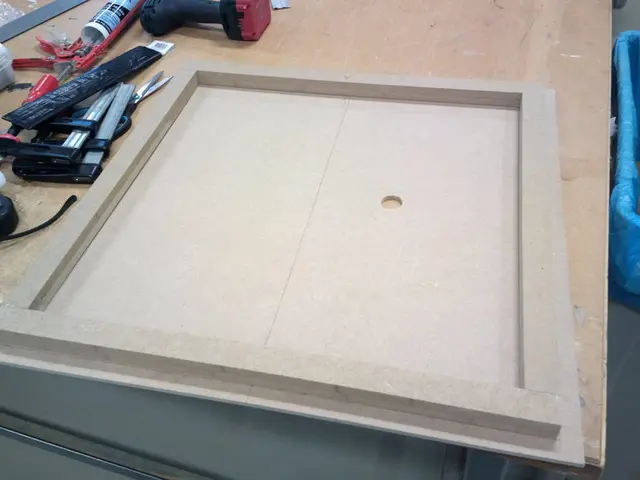Selecting Artwork for Every Room of Your Home: A Guide
A well-chosen wall art design can significantly elevate the decor of any room in your home. To create harmonious and visually appealing spaces, it's essential to consider the room's function, style, colour scheme, and scale. Here's a guide to help you select appropriate wall art designs for your living room, bedroom, kitchen, and dining room.
**Living Room**
- Coordinate colours: Select artwork that shares hues with your sofa, pillows, or rug to create harmony. Even one matching tone can be effective. - Match your style: For modern spaces, opt for abstract or minimal art. Boho styles suit earthy or botanical prints. - Size matters: Large walls with big furniture call for large art pieces as focal points; smaller pieces can be grouped together for impact. - Use contrast: If the room is neutral, bold art adds visual interest; in busy rooms, simpler art prevents overload. - Personal touch: Choose art you love to reflect your personality and feel right in the space.
**Bedroom**
- Soft, calming artwork or serene themes can complement the restful nature of bedrooms. - Art above the bed should be carefully sized—typically wider than the bed but not overwhelming. - Consider pieces that add tranquility and blend with bedroom linens and wall colours.
**Kitchen**
- Opt for cheerful, vibrant art or food and drink-themed prints to enhance the lively atmosphere. - Durable and easy-to-clean materials or framed prints behind glass work well due to kitchen moisture and splashes. - Small sets or collections can enhance kitchen walls without cluttering.
**Dining Room**
- Warm colours or jewel tones for wall art can enliven the room and create a cozy atmosphere. - Use mirrors to make the space feel bigger and brighter. - Incorporate unique artwork that reflects your style, such as abstract pieces, landscapes, or portraits, possibly arranged as a gallery wall. - Textured panels, tapestries, or floating shelves displaying art and memorabilia add interest without overwhelming the space.
**General Tips for All Rooms**
- Mix art sizes and types to avoid a museum-like feel; layering and varied arrangements bring dynamic, collected looks. - Create focal points with large pieces or cohesive groups of smaller works. - Trust your instincts and pick art that resonates with you to ensure your home truly reflects your personality.
By aligning your wall art choices with the room’s purpose, existing décor, and your personal taste, you can create harmonious and visually appealing spaces throughout your home.
Remember, oversized artworks are perfect for single walls, while mini and small frames can be hung in the kitchen on non-primary walls, on shelves, or on electric appliances. The bedroom is the most important room in a house, and the wall decor should make the owner feel happy, peaceful, and connected emotionally. The walls of the kitchen need not be neglected and can have wall art designs that look cosy and important.
Large artworks look good on smaller walls or places where there is a lot of furniture on the floor. Smaller artworks are generally used in groups and clusters. Medium-sized artworks are versatile and used creatively. The focal point of a decor is something that grabs attention first when one enters a room.
As a general placement rule, the painting should not stretch for more than 2/3rds of the sofa length. A cluster of small paintings can be used strategically in the living room. Lifestyle experts suggest softer and warmer colours, abstracts, landscapes, or nature as popular choices for bedroom wall decor. The walls in a living room call for the wall art design to be loud, bold, and express the personality of the owner. The dining room has room for creativity in placements and styles of wall art design.
The thumb rule for selecting artwork is to put up something you love. Every room has their individual style. It is important to match the colour of the hanging wall decor with the colour of the walls in the bedroom. The size of the artwork in the dining room should depend on the space, with 3-5 pieces working best. Wall art design in other spaces like the home office or bathroom should match the mood and area of the space.
- In the living room, choose artwork that coordinates with the sofa, pillows, or rug for harmony, and select style-appropriate pieces, such as abstracts for modern spaces or earthy prints for boho styles.
- Large walls with big furniture require large art pieces as focal points in the living room, while smaller pieces can be grouped together for impact.
- For bedrooms, soft, calming artwork or serene themes can complement the restful nature of the room, and artwork above the bed should be carefully sized to avoid overwhelming the space.
- In the kitchen, opt for cheerful, vibrant art or food and drink-themed prints, and choose durable, easy-to-clean materials or framed prints behind glass due to kitchen moisture and splashes.
- Warm colours or jewel tones for wall art can enliven the dining room and create a cozy atmosphere, while mirrors can make the space feel bigger and brighter.
- To create harmonious and visually appealing spaces, consider general tips like mixing art sizes and types, creating focal points, and choosing art that resonates with you to reflect your personality throughout your home.
- The walls in a house, such as the bedroom, kitchen, living room, and dining room, each have their unique style, and it's essential to match the colour of the hanging wall decor with the colour of the walls in each room, ensuring a cohesive and well-designed home decor.








